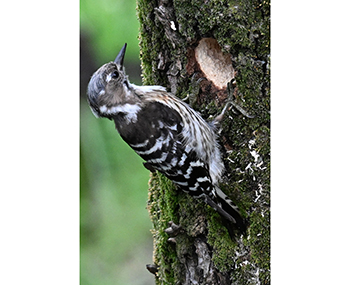“죽음으로 지켜라.(Stand or Die)” 미 8군 사령관인 워커 중장은 인민군으로부터 낙동강 방어선을 지키기 위해 이같이 말하며, 경북 상주에 주둔 중인 미 25보병사단을 마산으로 급파시켰다.
1950년 8월. 대한민국은 절체절명 위기였다. 마산과 창녕을 비롯한 낙동강 방어선이 무너지면 부산이 함락됐을 것이고, 대한민국은 공산화됐을 것이라고 군사전문가들은 평한다. 이 중 창녕 박진 전투, 다부동 전투 등은 기념관이 건립돼 선양 활동이 활발히 이뤄지고 있다. 하지만, 마산방어전투는 예외다. 한미동맹의 출발이자 상징 같은 전투이지만, 미군 주도 전투라는 이유 등으로 사료가 부족해 잊혀 왔다. 이에 5회에 걸쳐 마산방어전투 재조명 방안을 모색하고자 한다.
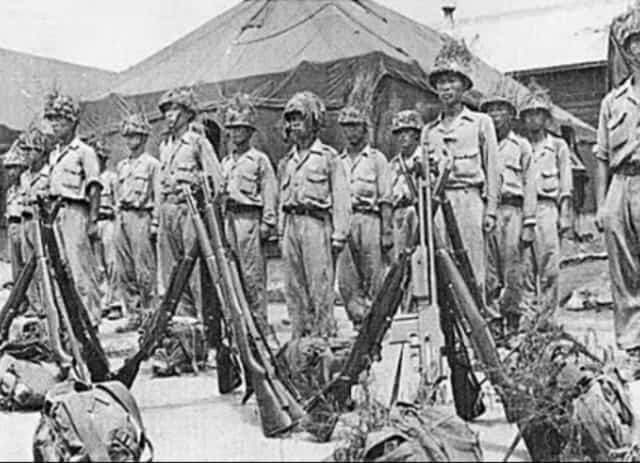
마산진동리지구전투에서 승리한 해병대 부대원들의 모습./마산방어전투 기념사업회/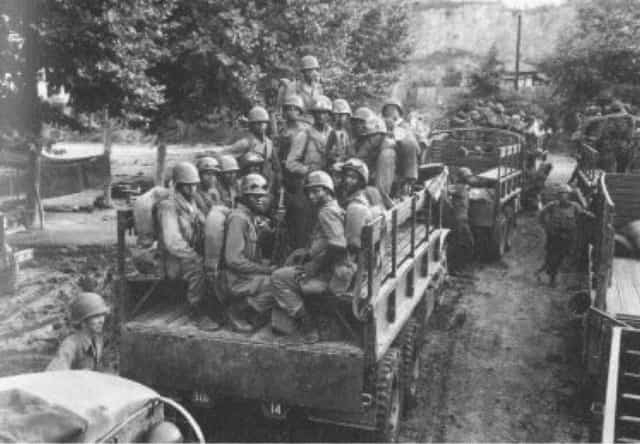
함안 전선으로 이동하고 있는 미24연대./마산방어전투 기념사업회/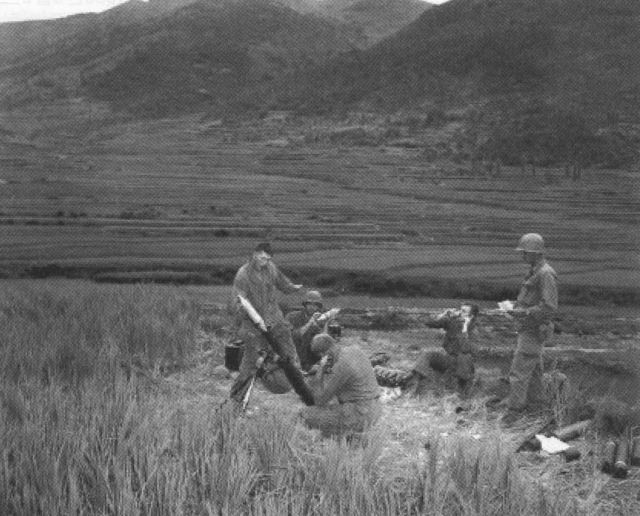
미 5연대 전투단 81㎜ 박격포 대원들이 마산 진전면 임곡 나들목 지점에서 서쪽을 향해 포격하고 있다./마산방어전투 기념사업회/
인민군, 8월 1일 진주 점령
함안·진동 고산지대 확보
인민군 6사단 마산 점령 시도미 25보병 상주→마산 이동
미 24사단은 창녕에 진지 구축
9월14일까지 45일간 전투
◇죽음으로 지킨 전투= 1950년 8월 1일 인민군은 남침 36일 만에 진주를 점령한 데 이어 마산 현동 검문소에 집결했다. 중국 ‘국공내전’에 참전해 전쟁 경험이 풍부한 조선족들로 구성된 인민군 6사단 7000여명은 함안·진동 고산지대를 확보한 후 마산 점령을 노리고 있었다. 당시 이 일대 주둔하고 있던 국군은 1000여명에 불과했다. 미 8군 사령관인 워커 중장은 급히 경북 상주에 주둔 중인 미 25보병사단을 250㎞ 넘는 마산으로 단 2일 만에 이동시켰다. 이에 맞춰 진주에서 후퇴한 미 24사단도 창녕에 낙동강 방어선 진지를 구축했다. 마산을 점령하려는 인민군과 사수하려는 국군과 미군은 8월 1일부터 9월 14일까지 45일간 치열한 전투를 벌였다.
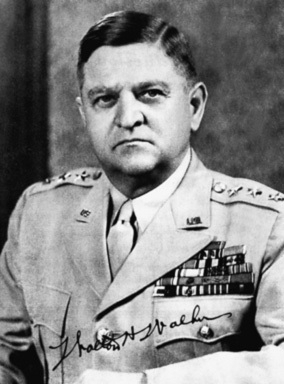
월튼 해리스 워커 미 8군 사령관./마산방어전투 기념사업회/특히 당시 마산방어전투 요충지였던 해발 739m 높이의 서북산은 고지 주인이 19번이나 바뀌었다. 이 과정에서 1000여명의 아군이 전사했다. 서북산 정상은 수없는 미군 함포 사격과 공군기의 네이팜탄으로 인해 나무가 사라지고 정상 높이가 낮아져 미군은 이 산을 ‘늙은 중머리 산’, ‘네이팜산 언덕’이라고 불렀다.
또 다른 격전지 옥녀봉은 70여년이 흐른 지금도 전쟁의 참상을 느낄 수 있을 정도로 치열했다. 미군 제5연대는 1950년 8월 7일 아침 일찍 제1대대를 진동리 도로를 따라 고성 방향으로 이동시켰다. 하지만 옥녀봉에 주둔하던 미군은 인민군 포위 공격을 받았다. 또한 교대하러 온 미 해병대도 능선에 도착해 교전하면서 누가 누구를 공격하는지도 모를 혼전이었다. 당시 날씨가 44℃까지 올라가 일사병 환자도 속출했을 정도로 전투는 처절했다.
만일 방어전투에서 패배했다면 지금 대한민국은 존재하지 않았을 수 있다. 인민군 6사단장 방호산 소장이 “마산을 점령하면 적의 숨통을 조르는 것이다”고 말했을 정도로 당시 마산은 전략적 요충지였다. 마산과 당시 임시수도인 부산까지는 직선거리로 40~50㎞에 불과했다. 마산방어전투에서 패배했다면 부산이 위험했고, 전세를 역전시킨 인천상륙작전도 힘들어졌을 수 있었다.
결국 마산방어전투에서 한미동맹군 승리로 인민군의 부산 점령을 막을 수 있었고, 국군과 UN군이 재정비할 시간을 벌 수 있었다. 이어 9월 15일 인천상륙작전이 성공하면서 반전의 기회를 가져왔다.
마산방어전투 지면 부산 위험
고지 주인 19번 바뀐 서북산
옥녀봉서도 치열한 교전 흔적미25사단·국군·해병대
다부동전투보다 5일 앞선
8월7일 첫 한미 연합 작전
◇최초 한미 연합 작전= 마산방어전투가 기존 최초 한미 연합작전이라고 알려진 ‘다부동 전투’보다 더 빠른 시기에 이뤄졌다는 주장이 나오고 있다. 연합작전은 통상 2개 이상 군대가 장기적인 공동 목적을 달성하기 위해 공식 협약이나 조약에 의해 상호 협력해 실시하는 작전을 말한다. 마산방어전투는 인민군 6사단을 막기 위해 미 25사단과 국군이 함께 연합 작전을 펼쳤다. 국군 민기식 부대(육군)와 김성은 부대(해병대), 경찰 중대는 킨 특수임무대(미군)에 배속돼 있었다. 이들은 연합작전을 통해 서북산 일대를 침투해 보급로를 차단하는 적을 소탕하고, 함안 도로를 확보하는 임무를 수행했다.
김성은 부대는 미 제27연대에 배속돼 마산~진동 보급로 확보를 위해 주요 고지를 탈환함으로써 주 보급로를 확보하는 공적을 세웠다. 당시 이 같은 활약을 보고 종군기자였던 ‘뉴욕 헤럴드 트리뷴’의 마거릿 히긴스 기자는 “귀신이라도 잡겠다”고 보도했다. ‘귀신 잡는 해병대’ 신화는 이때 탄생했다.
하순복 경남대학교 군사학과 교수는 “최초 한미 연합 작전으로 알려진 다부동 전투는 8월 13일 시작됐지만, 마산방어전투에서 국군과 미군은 그보다 5일 앞선 7일부터 연합 작전을 전개했다”며 “연합 작전은 한 명이 지휘체계를 잡고 전투를 지휘해야 하는데 다부동 전투 경우 그런 성격은 아니었다. 마산방어전투는 국군이 미군에 배속돼 하나의 지휘체계가 형성됐다”고 설명했다.
하 교수는 “마산방어전투는 최초 한미 연합작전임과 동시에 한미동맹 출발점”이라며 “연합작전을 통해 피를 나누며 싸웠기에 동맹이 강해졌다”고 강조했다.
전투 당시 미 해군과 공군 지원도 큰 역할을 했다. 마산 진동만에는 미 해군 구축함 4척이 교대하면서 1950년 8월 27~9월 24일까지 포격을 지원했다. 구축함들은 포격을 통해 사단의 모든 방위선 지역 외 산재해 있는 넓은 지역에 적군이 주둔하지 못 하게 했다. 미 25사단 전투일지 중 8월 21일 자의 기록에는 “제5전술비행단 항공기 총 18대가 공격과 역공을 지원했다. 25사단은 전술비행단 사령관에게 근접 지원 폭격에 혁혁한 공을 세운 공군 소령 딘 E 헤스를 치하하면서 감사의 선물을 발송했다”고 명시됐다. 마산방어전투는 육군과 해군, 그리고 공군이 참전한 대규모 전투임을 알 수 있다.
티몬스 대위, 서북산서 전사
아들·손자 모두 한국 근무
1995년 서북산 정상에 추모비
◇한미동맹 상징= 가장 치열했던 서북산 전투 당시 로버트 리 티몬스 대위는 중대장으로 중대원 100여명과 함께 고지를 지키던 중 인민군 습격으로 부상을 입었다. 이후 후송 중 인민군 기관총 공격을 받아 전사했다. 티몬스 대위 시신은 1년 뒤에 발견돼 미 워싱턴의 알링턴국립묘지에 안장됐다. 그는 지난 2020년 11월의 6·25 전쟁영웅으로 선정되기도 했다. 전사 당시 티몬스 대위에게는 7살 아들이 있었다. 아들인 리처드 티몬스는 아버지를 이어 군인이 됐고, 이후 주한 미 8군 사령관으로 한국에 부임했다. 이후 서북산을 찾아 아버지를 기렸고, 육군 39사단은 1995년 12월에 로버트 리 티몬스 대위를 기리는 추모비를 산 정상에 세웠다.
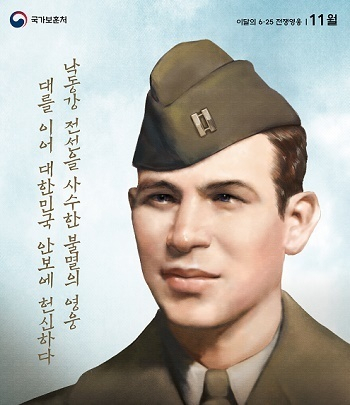
로버트 리 티몬스 대위./국가보훈부/티몬스 대위 손자도 미 육군 대위로 한국 근무를 자원해 1996년부터 1997년까지 판문점 인근 미 2사단 최전방 초소에서 근무했다. 3대에 걸쳐 대한민국 자유와 평화를 지킨 것이다. 하순복 교수는 “마산방어전투에서는 미군을 주축으로 한 유엔군이 주도적인 역할을 했기 때문에 그들의 희생을 간과해서는 안 된다. 이들은 작은 나라에 불과했던 대한민국 자유와 평화를 위해 참전해 목숨을 바쳤다”며 “학계의 추가적인 연구와 군의 유해 발굴 사업 등을 통해 제2, 제3의 티몬스 대위 사례를 찾아내고 예우가 이뤄져야 한다”고 강조했다.
※ 참고문헌= 배대균(2020) ‘마산방어전투’ , 배대균(2021) ‘창녕 방어전투 실화’, 하순복(2022) ‘낙동강 방어선 중 마산 서부지역 전투의 재조명’
박준혁 기자 pjhnh@knnews.co.kr
※ 이 기사는 경상남도 지역신문발전지원사업 보조금을 지원받았습니다.
〈아래는 위 기사를 '챗GPT'로 번역한 영문 기사입니다. 영문 번역에 오류가 있을 수 있을 수도 있습니다.〉
Below is an English article that translates the above article into 'ChatGPT'. There may be errors in the English translation.
[Forgotten War, Battle of Masan] Part 1: The First U.S.-ROK Joint Operation
"The Battle of Masan marks the first U.S.-ROK joint operation and serves as the starting point for the U.S.-ROK alliance."
“Defend with death. (Stand or Die)” Lieutenant General Walker, commander of the U.S. 8th Army, said these words to protect the Nakdong River defense line from the North Korean People's Army and dispatched the U.S. 25th Infantry Division stationed in Sangju, Gyeongsangbuk-do to Masan.
August 1950. South Korea was in a desperate crisis. Military experts say that if the Nakdong River defense line, including Masan and Changnyeong, had collapsed, Busan would have fallen and the Republic of Korea would have become communist. Among these, memorial halls have been built for the Battle of Changnyeong and Bakjin and the Battle of Dabudong, and Shenyang activities are actively taking place. However, the Masan battle is an exception. Although it is a symbolic battle and the beginning of the ROK-US alliance, it has been forgotten due to a lack of historical records due to the fact that it was a US-led battle. Accordingly, we would like to seek ways to reexamine the Masan Battle over five rounds.

The sight of Marine Corps unit members victorious in the Battle of Masan-Jinjong-ri./Masan Battle Commemoration Committee/
The U.S. 24th Infantry Division is moving towards the Haman front./Masan Battle Commemoration Committee/
Members of the U.S. 5th Infantry Division's 81mm mortar unit are firing towards the west from the intersection at Imkok, Jinjeon-myeon, Masan./Masan Battle Commemoration Committee/-August 1st: The North Korean People's Army occupies Jinju.
-Securing Haman and Jindong Mountainous Areas
-Attempted Occupation of Masan by the North Korean People's Army 6th Division
-Movement of the U.S. 25th Infantry Division from Sangju to Masan
-Establishment of Defensive Positions by the U.S. 24th Division in Changnyeong
-45 Days of Combat Until September 14th
◇A Battle Defended with Death= On August 1, 1950, the North Korean People's Army, after capturing Jinju 36 days into their southern advance, gathered at the Masan Hyundong Inspection Station. Comprising the battle-hardened ethnic Koreans with experience in the Chinese Civil War, the North Korean People's Army's 6th Division, totaling over 7,000 soldiers, aimed to occupy Masan after securing the strategic highlands of Haman and Jindong. At that time, the South Korean military stationed in the area numbered only around 1,000.
In response, Lieutenant General Walker, the commander of the U.S. 8th Army, swiftly moved the U.S. 25th Infantry Division, stationed in Sangju in northern Gyeongsang Province, over 250 km to Masan in just two days. Simultaneously, the U.S. 24th Division, which had retreated from Jinju, established defensive positions along the Naktong River in Changnyeong. The North Korean People's Army's attempt to occupy Masan and the joint efforts of the South Korean and U.S. forces to defend it resulted in a fierce 45-day battle from August 1 to September 14.
Especially crucial during the Masan Battle was the 739m high Seobuksan, whose ownership changed hands 19 times. In this process, over 1,000 allies lost their lives. The summit of Seobuksan witnessed numerous artillery bombardments and napalm strikes by U.S. forces, causing the once-wooded peak to disappear and earning it the nicknames 'Old Baldy' and 'Napalm Hill.'
Another battleground, Oknyeobong, still bears the scars of the war, vividly capturing the intensity of the conflict even after 70 years. On the morning of August 7, 1950, the U.S. 5th Regimental Combat Team moved its 1st Battalion along the road to Jindong-ri towards Goseong. However, the U.S. forces stationed on Oknyeobong faced encirclement by the North Korean People's Army. As the U.S. Marines arrived for relief, confusion reigned, and the chaotic nature of the battle made it unclear who was attacking whom. The weather at that time, reaching up to 44℃, intensified the brutality of the combat, leading to a high incidence of heatstroke among the soldiers. The echoes of this fierce battle still resonate on Oknyeobong, serving as a poignant reminder of the sacrifices made during the Korean War.
Had the Battle of Masan ended in defeat, the existence of the Republic of Korea might have been in jeopardy. The commander of the North Korean People's Army 6th Division, General Bang Hosan, emphasized the strategic importance of Masan, stating, "Occupying Masan means tightening the enemy's noose." Masan was only 40-50 km in a straight line from Busan, which was the temporary capital at the time. Losing in the Battle of Masan would have endangered Busan, making the successful Incheon Landing Operation, which later reversed the tide of the war, much more challenging.
Ultimately, the victory of the combined forces of South Korea and the United States in the Battle of Masan prevented the North Korean People's Army from capturing Busan, buying crucial time for the reorganization of the South Korean and UN forces. Subsequently, the successful Incheon Landing Operation on September 15 provided a pivotal opportunity for a turnaround in the overall situation. The Battle of Masan played a crucial role in shaping the course of the Korean War, ensuring the continued existence of the Republic of Korea.
-The Battle of Masan, a Ground Critical to Busan's Safety
-Seobuksan's Ownership Changes 19 Times
-Fierce Combat on Oknyeobong
-The First Joint U.S.-ROK Operation on August 7, Preceding the Battle of Dabudong by 5 Days
◇Inaugural U.S.-ROK Joint Operation= A growing argument suggests that the Battle of Masan, a defense against the North Korean People's Army 6th Division, preceded the commonly acknowledged "Battle of Dabudong," making it the earliest recorded U.S.-ROK joint operation. Joint operations generally refer to coordinated efforts by two or more military forces, bound by official agreements or treaties, to achieve shared long-term objectives.

General Walton Harris Walker, Commander of the U.S. 8th Army /Masan Battle Commemoration Committee/In the Battle of Masan, the U.S. 25th Infantry Division and the South Korean military joined forces in a concerted effort to thwart the advance of the North Korean People's Army 6th Division. The South Korean civilian militias (Army), Kim Sung-eun's unit (Marines), and a police detachment were attached to the K-9 Counter Guerrilla Special Mission Group (U.S. forces). Together, they executed a joint operation, penetrating the Seobuksan region to eliminate enemy forces blocking supply routes and securing the crucial Haman road.
Kim Sung-eun's unit, attached to the U.S. 27th Infantry Regiment, played a pivotal role in reclaiming key high points to secure the main supply route. Witnessing their remarkable performance, Margaret Higgins, a war correspondent for the New York Herald Tribune at the time, reported, "Even if they have to catch ghosts, they will." This marked the birth of the legend of the "Ghost-Catching Marines," celebrating their extraordinary contributions during this period.
According to Professor Ha Soon-bok of the Military Science Department at Gyeongsang National University, the Battle of Masan, occurring five days before the well-known Battle of Dabudong, marked the inception of the first joint U.S.-ROK operation. He explains that unlike the Battle of Dabudong, where the command structure wasn't as unified, the Battle of Masan saw the establishment of a single command structure, with the South Korean military being attached to the U.S. forces.
Professor Ha emphasizes that the Battle of Masan not only represented the initial U.S.-ROK joint operation but also served as the starting point for the U.S.-ROK alliance. He underscores that the alliance was strengthened through shared bloodshed and a common struggle during joint operations.
During the Battle of Masan, significant support was provided by the U.S. Navy and Air Force. Four U.S. Navy destroyers alternated bombardments in the Masan-Jindong area from August 27 to September 24, preventing the enemy from establishing a presence in wide, scattered areas outside the division's defensive line. The combat journal of the U.S. 25th Infantry Division recorded on August 21, "Eighteen aircraft from the 5th Tactical Fighter Wing supported attacks and counterattacks. The 25th Division, expressing deep gratitude, sent a token of appreciation to Air Force Lieutenant Dean E. Hess, who had been instrumental in close air support bombing."
The Battle of Masan thus stands as a large-scale engagement involving the participation of the Army, Navy, and Air Force, showcasing the comprehensive collaboration of U.S. and ROK forces during this critical period of the Korean War.
-Captain Timmons, Fallen at Seobuksan
-Both son and grandson are stationed in Korea
-In 1995, a memorial was erected at the summit of Seobuksan
◇Symbol of the U.S.-ROK Alliance= During the intense Battle of Seobuksan, Captain Robert Lee Timmons, serving as a platoon leader, defended the hill with around 100 platoon members. He sustained injuries during The North Korean People's Army assault. While being evacuated, he faced a machine gun attack and lost his life. Timmons' remains were discovered a year later and interred at Arlington National Cemetery in Washington. In November 2020, he was posthumously honored as a hero of the Korean War. At the time of his death, Captain Timmons left behind a 7-year-old son, Richard Timmons, who later followed in his father's footsteps, becoming a military officer and eventually serving as the U.S. 8th Army Commander in Korea. In tribute to Captain Robert Lee Timmons, the 39th Infantry Division erected a memorial at the summit of Seobuksan in December 1995.

Captain Robert Lee Timmons./Ministry of Patriots and Veterans Affairs/Captain Timmons' grandson also volunteered for service in Korea as a U.S. Army officer, serving near the Korean Demilitarized Zone (DMZ) from 1996 to 1997 at an outpost near Panmunjom. Across three generations, they contributed to preserving the freedom and peace of South Korea. Professor Ha Soon-bok emphasized, "In the Battle of Masan, the UN forces, predominantly led by the U.S. military, played a pivotal role. Their sacrifices should not be overlooked. They dedicated their lives to the freedom and peace of South Korea, a nation that was just a small country at the time." He further stressed the need for additional academic research and military efforts, including the excavation of remains, to uncover and honor more cases similar to Captain Timmons, stating that such endeavors are crucial to paying proper respects to those who sacrificed for the Republic of Korea.
※References = Bae Dae-gyun (2020) ‘Masan Defense Battle’, Bae Dae-gyun (2021) ‘True Story of Changnyeong Defense Battle’, Ha Sun-bok (2022) ‘Reexamination of the Battle of the Western Masan Area of the Nakdong River Defense Line’
Park Junhyeok, Journalist
pjhnh@knnews.co.kr
※This article received support from the Gyeongsangnam-do Local Newspaper Development Support Project Grant.
< 경남신문의 콘텐츠는 저작권법의 보호를 받는 바, 무단전재·크롤링·복사·재배포를 금합니다. > ※ 관련기사- 박준혁 기자의 다른기사 검색
2024년 05월 02일 (목)
- 경남신문 > 기획연재 > 잊힌 전쟁, 마산방어전투

















